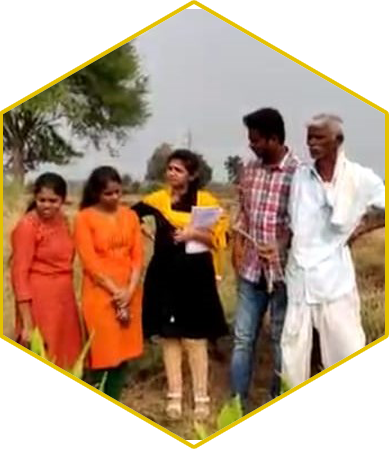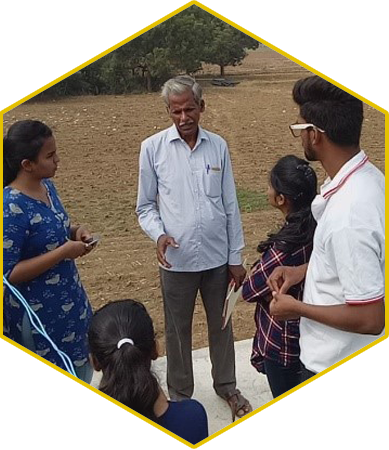Design process includes modules like problem identification, specification development, conceptual design, detailed design, product delivery and social entrepreneurship. The interdisciplinary teams will be formulated and mentors will be assigned to each time. ‘Real design for real people’ is the philosophy adopted to create significant impact in the society.

The students will do ethnographic survey (collect the information related to demographic and geographic data of the society), through observation and interaction with different communities/NGOs students will identify different problems and there after these problems will be discussed by the team members and one problem will be finalized as the need statement. Teams will collaborate with the NGOs as a community partner and formally meet the user community to get deeper understanding of the needs of the community. Teams will develop the persona of the stakeholders/users to analyze the frustrations and the pleasures of the user community. These inputs will drive them towards the serious problems of the real people, so that problems can be prioritize and solve the highest priority one. Service learning is the new philosophy introduced here which enables both the community partners and student teams benefitted mutually.
The students will be engaged with the community partner during the implementation of their project. They collect the inputs from the community partner to understand their needs and then develop the target specifications and objectives of the project. The target specifications will be helpful during the generation of new ideas, as these specifications represent the requirements of the stakeholder community. These are approximate specifications which can be changed (if required) after the ideation work is completed. Once the specifications are finalized, confirmation should be taken from the community partners, if any critical suggestions shared by them then those modifications should be incorporated before going to next phase.

Students will do ‘prior art search’ to analyze the existing solutions available in the market for the finalized problem considered as the need statement. Prior art search can be done using the basic sources like the commercial market, e-commerce, you tube, patent and journals. Also they study the limitations of those existing solutions/products, so that it will be easy for them to generate novel ideas (sketches) which will solve the problem. Innovation and creativity tools like biomimic, mind-map, SCAMPER etc will be used to generate novel solutions. These innovative ideas will be brainstormed and low fidelity prototypes will be developed. These prototypes will be tested and user feedback will be recorded, which will ease the teams to finalize the idea/solution.
The student teams will take iterative feedbacks from the partner/users to refine their idea. Once the conceptual design is finalized, they move to the detailed design. Here they have to take approval from advisor about the product architecture (physical/functional decomposition, materials/specifications) and the special claims/ features of the project which make them unique from the available products of the market. Making use of the maker space available, students learn different design tools and develop the detailed product. The functions of the product should map with the needs/requirements of the users, if not then modifications/redesign should be done by the teams.
After the detailed design, the product will be demonstrated before the expert team and then tested at the user premises. (Verification and validation tests). Finally the product will be delivered to the community partners with an agreement of limited period maintenance. The same idea/product should be launched as a social enterprise by developing/pitching the business model. After the customer research and value proposition added, the team will be forwarded to the incubation centre for the next level development.
Formative assessment will be done after each phase of the design process and grades will be awarded as per the defined rubrics. The evaluation sheet shows the parameters on which the assessment will be done.
Individual’s roles to be assessed using their assigned responsibilities.
NGO or Community partner’s agreement (profile of the partner).
Detailed design includes the authenticity of working.
Testing videos at user premises and user feedback on paper.
Thesis report includes phase wise documents in binding format.


SR Engineering College
AnanthaSagar (V), Hasanparthy (M),
Warangal, Telangana - 506371

+ 91-870-2818333-11
epics@srecwarangal.ac.in
Follow us